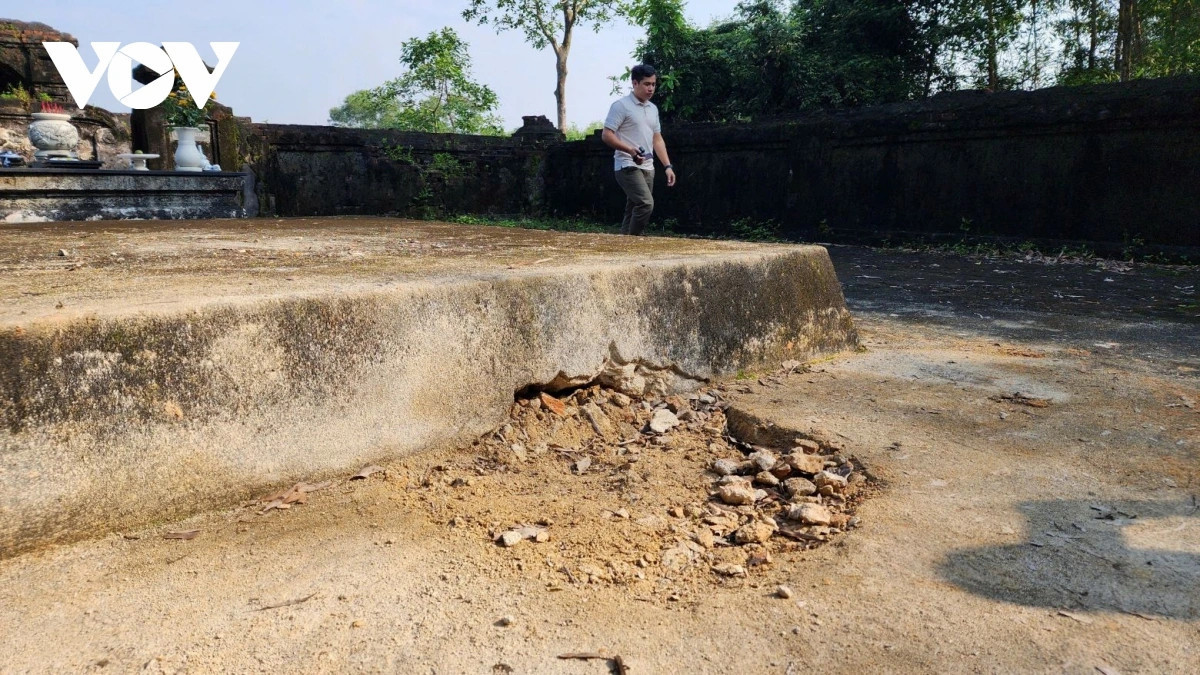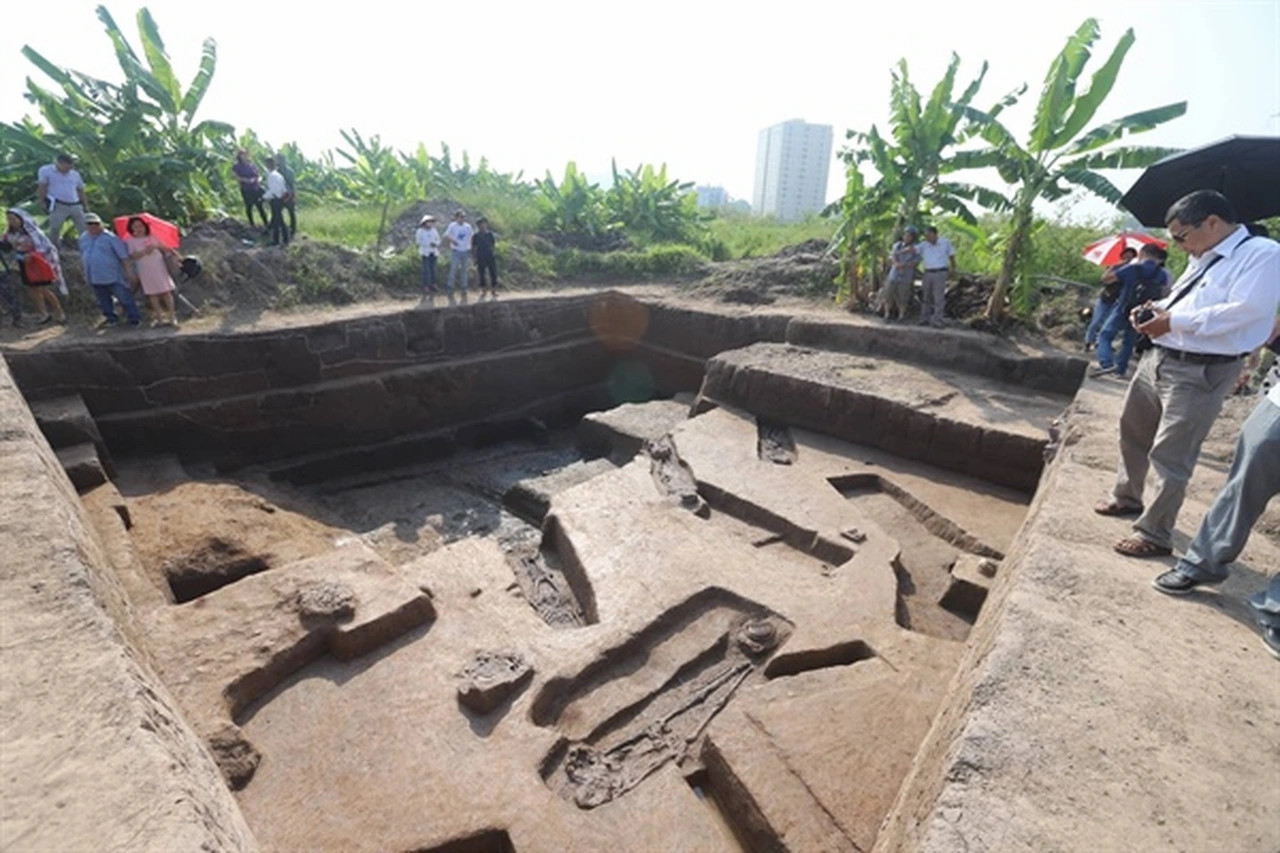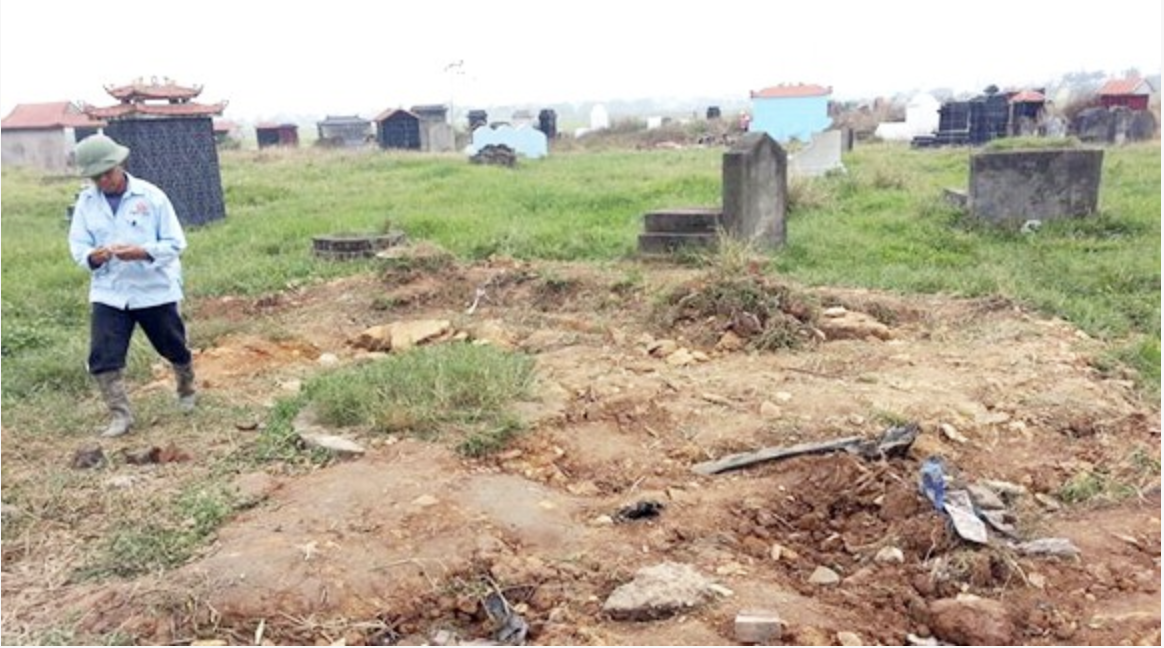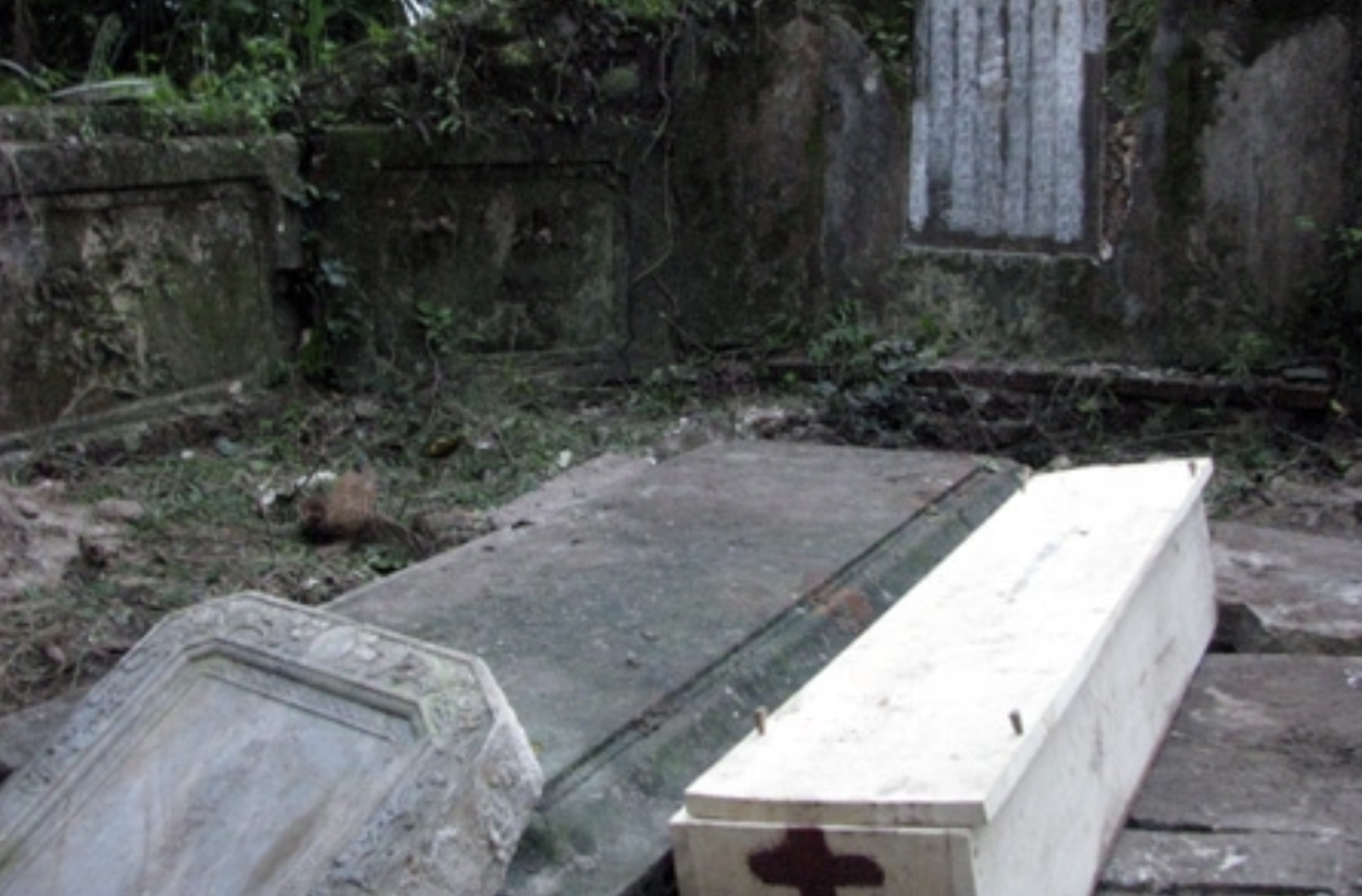Recently, two Chinese men, Shen Jiangyang and Deng Zhiji, were arrested by Vietnamese police for allegedly trespassing and digging at the tomb of King Le Tuc Tong in Kien Tho Commune, Ngoc Lac District, Thanh Hoa Province.

On May 3, the suspects used metal detectors and digging tools in their search for ancient artifacts. However, after noticing people nearby, they abandoned their tools and fled the scene.
The next day, May 4, both suspects were arrested while trying to flee to Mong Cai City in Quang Ninh Province in an attempt to leave the country for China. The case remains under investigation.
This incident is not isolated. In recent years, Vietnam has suffered multiple cases of relic theft and illegal grave excavations, causing severe damage to historical sites and cultural heritage.
Nguyen Phuc Khoat’s tomb (Hue) targeted by grave robbers

In early January 2025, members of the Nguyen Phuoc Clan Council discovered signs of grave robbery at Truong Thai Tomb in Long Ho Ward, Phu Xuan District – the burial site of Lord Nguyen Phuc Khoat.
The dug-up area had been disguised with dry leaves. It was uncovered by heritage site staff during routine cleaning. Scattered soil and rocks at the scene indicated unauthorized excavation. Although the hole had been refilled, it appeared freshly dug.
It is known that this tomb was also looted during wartime by individuals seeking gold and treasure.
Several tombs of Nguyen lords, royal family members, and even Nguyen Dynasty emperors have previously been violated by grave robbers searching for hidden riches.
For instance, Queen Mother Tu Du’s tomb was robbed in the 1980s; Vinh Mau tomb (mother of Lord Nguyen Phuc Chu) and Vinh Thai tomb (wife of Lord Nguyen Phuc Khoat) were looted in the 1990s.
Other imperial tombs such as Boi Lang (King Kien Phuc), An Lang (King Duc Duc), Kien Thai Vuong’s tomb, and Truong Phong tomb (Lord Nguyen Phuc Chu) have also suffered from illegal excavation.
Looting at the Vuon Chuoi archaeological site (Hanoi)

Located in Kim Chung Commune, Hoai Duc District, the Vuon Chuoi site is an important archaeological zone showcasing multiple cultural layers from late Phung Nguyen to post-Dong Son periods.
As a cluster of ancient tombs, Vuon Chuoi has long attracted the attention of grave robbers and artifact hunters. The looting intensified from 2010 to 2020, with culprits often using metal detectors to locate tombs and steal burial goods.
Theft at the ‘Lady Lord’s’ tomb in Hung Yen

On the night of November 19, 2013, villagers in Thi Trung Hamlet (Dinh Du Commune, Van Lam District) spotted a group of five to seven people near the village cemetery.
The group, traveling in a white 7-seater vehicle, carried shovels and pickaxes to the grave known locally as the “Lady Lord’s” tomb. Unable to break it open manually, they brought in a large excavator to dig up the site.
After prying open the coffin, the group took four planks of precious wood traditionally buried with the deceased and hastily reburied the remains.
Local elders recalled the tomb as having existed since their childhood. Its origin remains unknown, though oral tradition refers to it as the “Lady Lord’s” tomb.
Based on eyewitness accounts and collected data, some experts believe the tomb resembles compound-structured burials found elsewhere in Vietnam, such as the 400-year-old “Lady of the Bowls” tomb in Hung Dao Commune, Tu Ky District, Hai Duong Province.
Forgery used to loot a 300-year-old tomb in Quang Nam

In March 2012, in An Son Ward, Tam Ky City, a group of people forged signatures of local authorities to organize the illegal excavation of a 300-year-old tomb belonging to Hoang Hoang Nhan, a nobleman from the Gia Long era.
This ancient tomb was built with solid stone structures and large lotus-bud-shaped pillars. The headstone was engraved with old script, but much of it was left defaced by the robbers. The coffin lid, carved from a massive stone slab, was violently removed.
The tomb was once surrounded by stone statues of guards, but these had vanished over time.
Y Nhuy